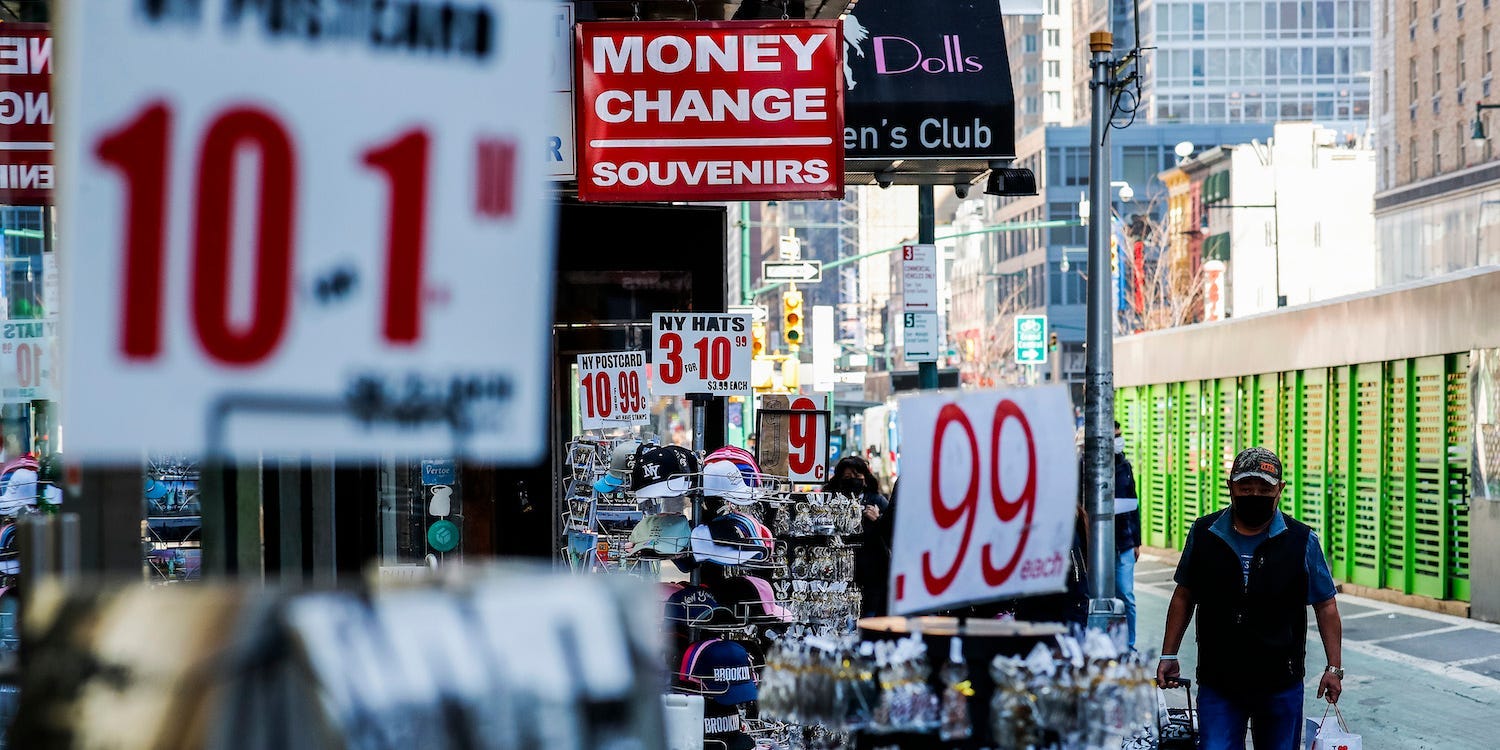The US could see a big drop in inflation without hitting a recession, Bank of America said. Strategists pointed to the inverted Treasury yield curve, the bond market’s notorious recession gauge. But this time around, the indicator is signaling a hard landing for inflation, not for the economy. Loading Something is loading.
Thanks for signing up!
Access your favorite topics in a personalized feed while you’re on the go.
Inflation could be headed for a big drop, and prices could cool significantly without the US having to deal with a recession, according to Bank of America.
Strategists pointed to the inverted 2-year and 10-year Treasury yield curve, the bond market’s notorious recession gauge that has successfully predicted numerous downturns, most recently in 1990, 2001, and 2008. When short-term yields rise above those of longer-term bonds, it has historically signaled investors believe a downturn is coming.
The difference between the yields on the 2-year and the 10-year Treasury just steepened to a full percentage point last week, marking the steepest inversion in over 40 years.
This time around, though, the indicator is more reflective of a hard landing coming for inflation, the bank said, and the US economy is still probably going to avoid a steep downturn.
“While curve inversion hear historical extremes has garnered higher recession probabilities from models, we think curve shape is more a function of expectations for declining inflation than a deterioration in growth,” strategists said in a note on Thursday. “A look under the hood suggests that forward real rates do not price elevated recession risk and instead may reflect expectation for softer landing vs consensus.”
That’s because forward real yields, which represent the market’s expectations of bond yields adjusted for the rate of inflation, have only seen a “modest drop” over the short-term, the bank said.
That suggests investors are expecting the Federal Reserve to pull back on interest rates slowly – a move they are unlikely to do if the economy faces a particularly high risk of recession.
“Curve inversion at historically extreme levels does not currently reflect elevated recession risk, but instead is largely related to expectations for cuts alongside inflation converging to target,” strategists added, referring to the Fed’s inflation target of 2%.
Investors have been eyeing a potential recession for the past year as the Fed raised interest rates aggressively to tame inflation, a move that threatens to tip the economy into recession.
Rates are now at their highest level since 2007, with Fed officials suggesting that more hikes are to come later this year. Markets are pricing in an 87% chance the Fed will hike rates another 25 basis-points at their July policy meeting, a move that would lift the Fed funds rate target to 5.25-5.5%.
The New York Fed, meanwhile, has priced in a 71% chance the economy will tip into recession by next year.
